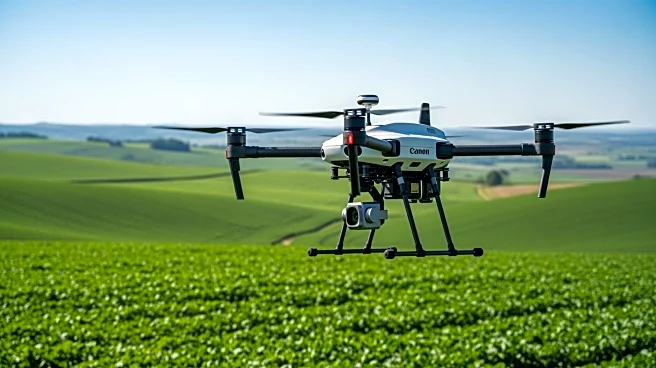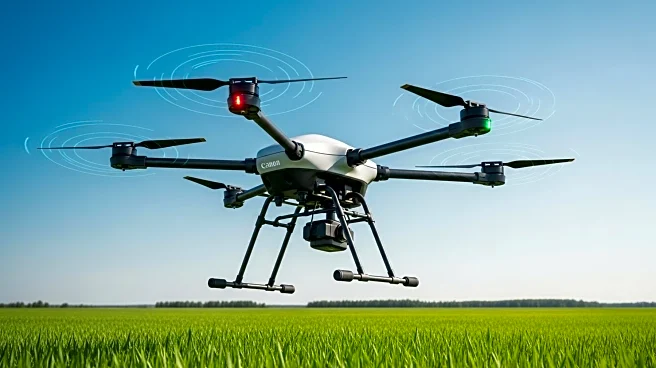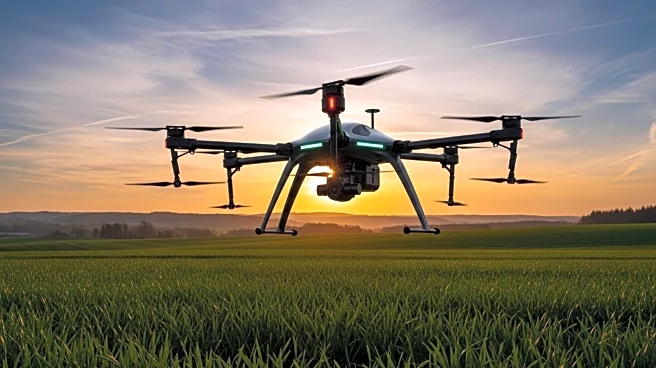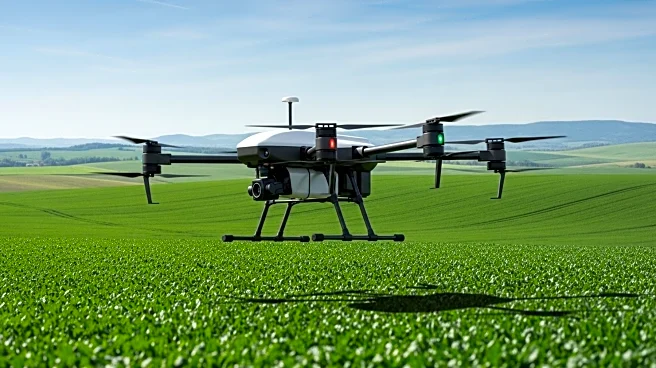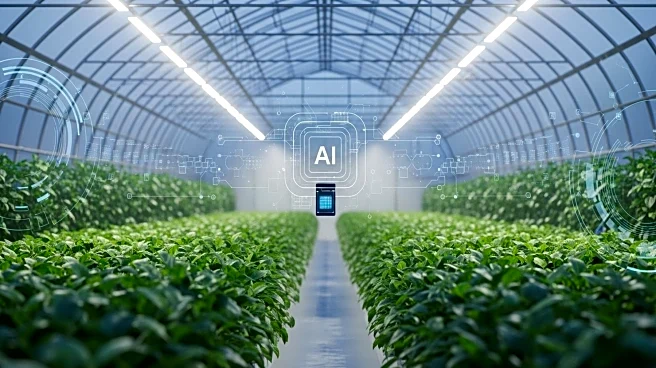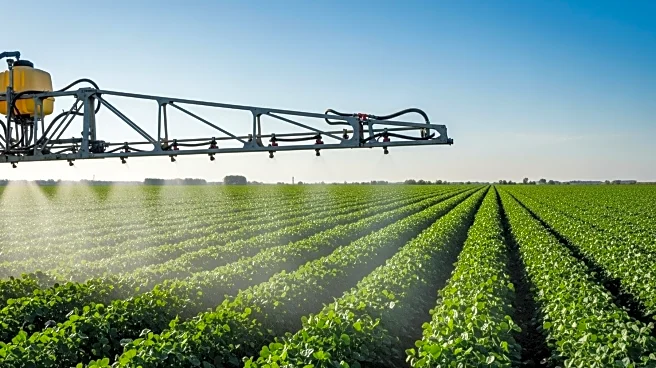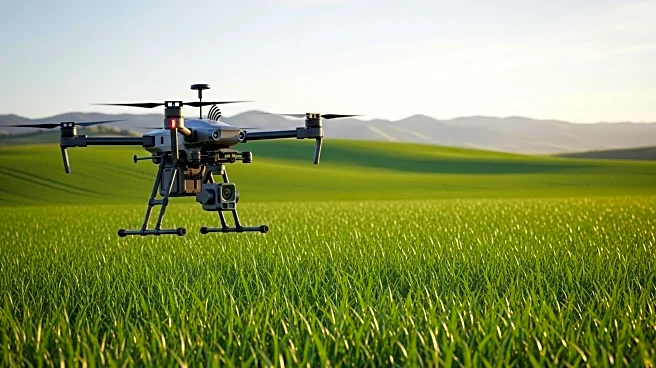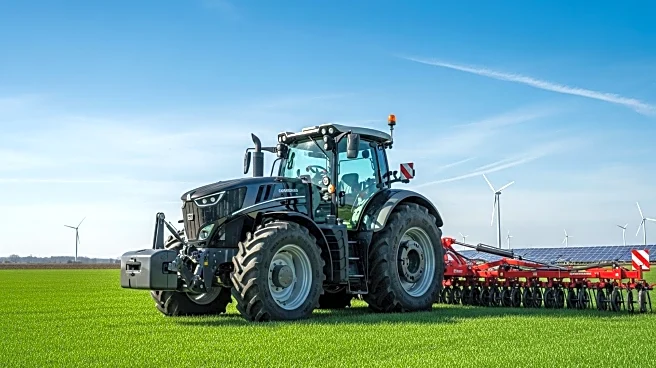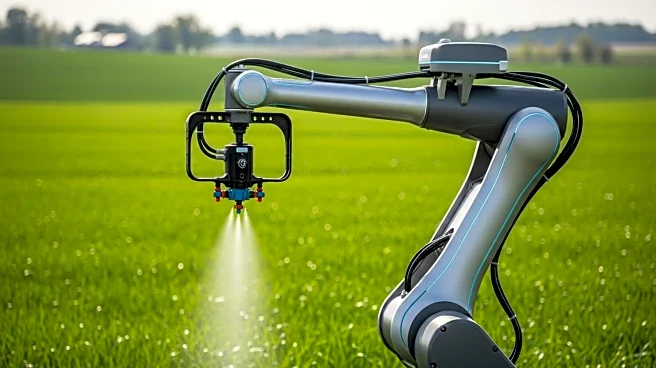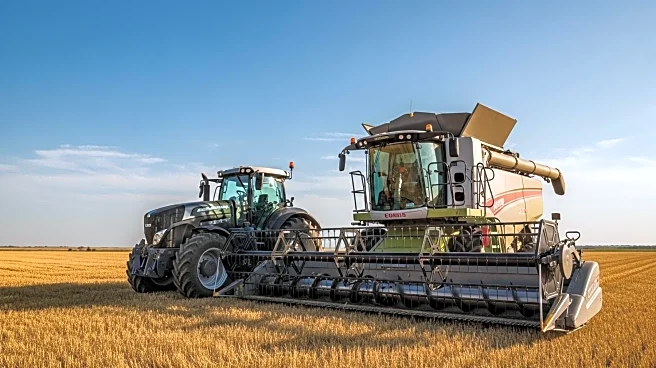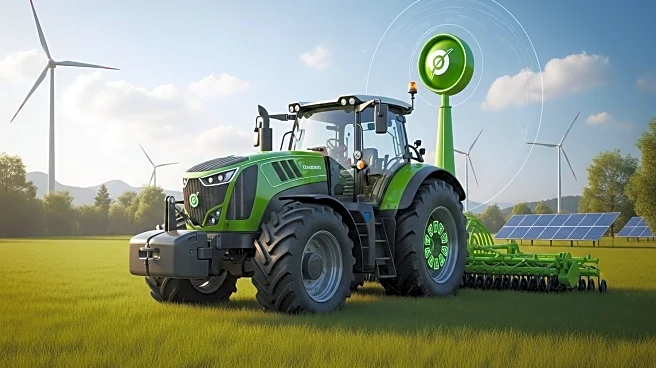What's Happening?
The Federal Aviation Administration (FAA) has proposed a new rule that could significantly change how drones are used in agriculture. This proposal aims to allow commercial operators to fly drones beyond
their visual line of sight, which would enable farmers to cover larger areas without the need for multiple pilots or spotters. Roger McEowen from the Washburn School of Law discussed the implications of this proposal on RFD-TV's Market Day Report. He explained that the rule is designed to modernize drone operations, thereby increasing range and flexibility. This change is expected to enhance precision agriculture by improving data collection and resource management through technologies like aerial mapping and crop health imaging.
Why It's Important?
The proposed FAA rule is crucial for the agricultural sector as it promises to reduce time and labor costs associated with monitoring crops, managing livestock, and applying precision technology. By allowing drones to operate beyond the visual line of sight, farmers can achieve more efficient and comprehensive coverage of their land. This advancement is expected to drive demand for agricultural drones, which is projected to grow from $4.7 billion to nearly $30 billion by 2033. The rule could also lead to more reliable technology, further strengthening precision agriculture and resource management.
What's Next?
Before the FAA's proposed rule can become official policy, it must undergo a public comment period and a safety evaluation. Stakeholders in the agricultural industry, including farmers and drone manufacturers, are likely to participate in this process to ensure the rule meets safety standards and addresses industry needs. If implemented, the rule could pave the way for more innovative drone applications in agriculture, potentially transforming farming practices across the United States.
Beyond the Headlines
The expansion of drone use in agriculture could have broader implications for rural communities and the environment. By improving efficiency and reducing resource waste, drones could contribute to more sustainable farming practices. Additionally, the increased use of drones might lead to new job opportunities in drone operation and maintenance, benefiting local economies.
